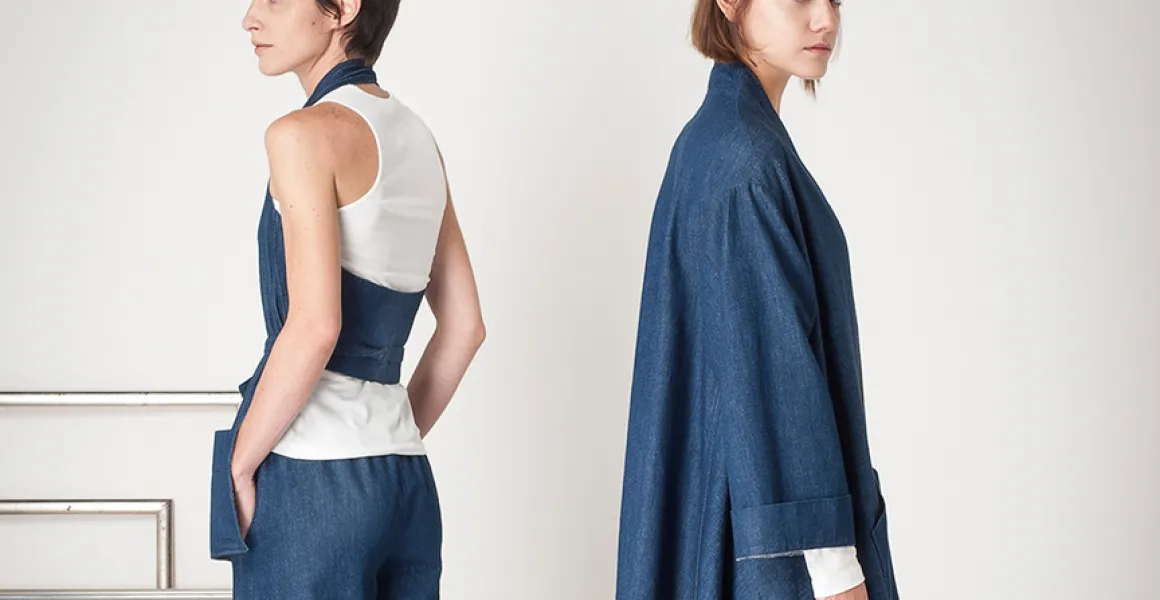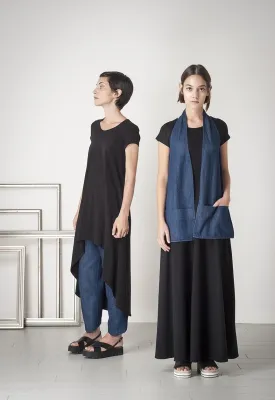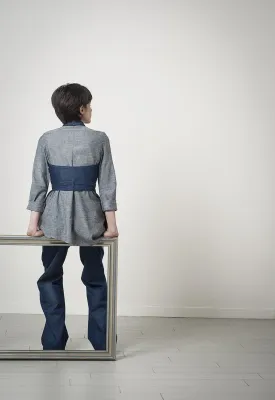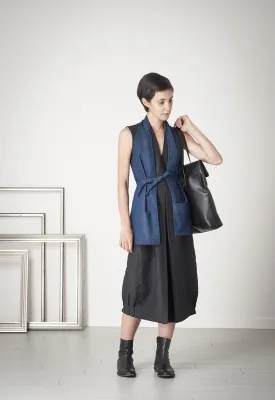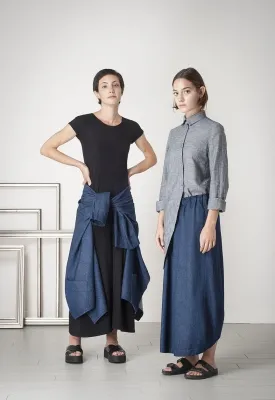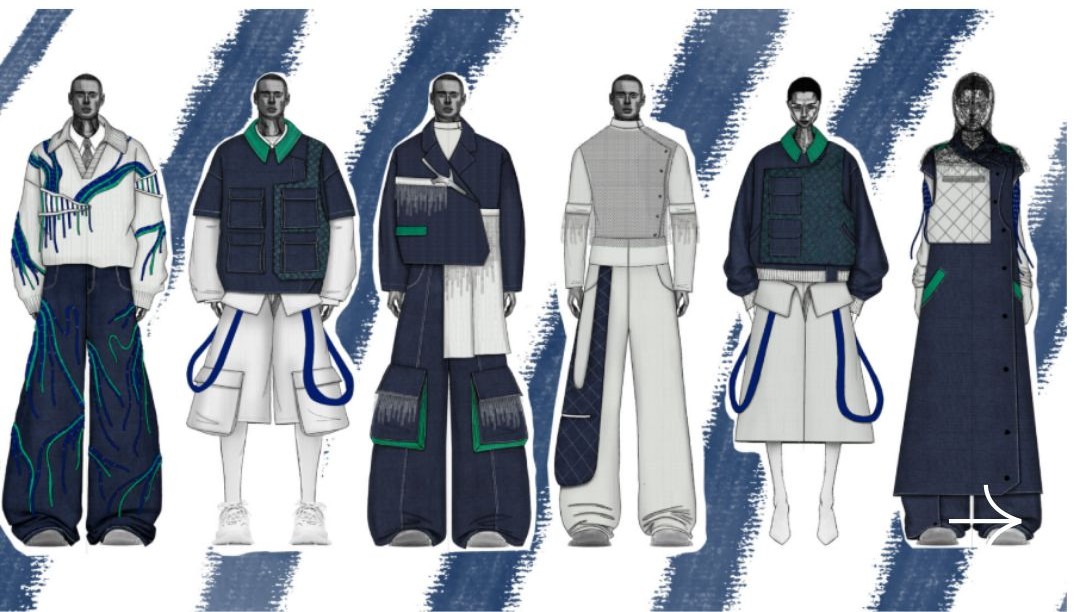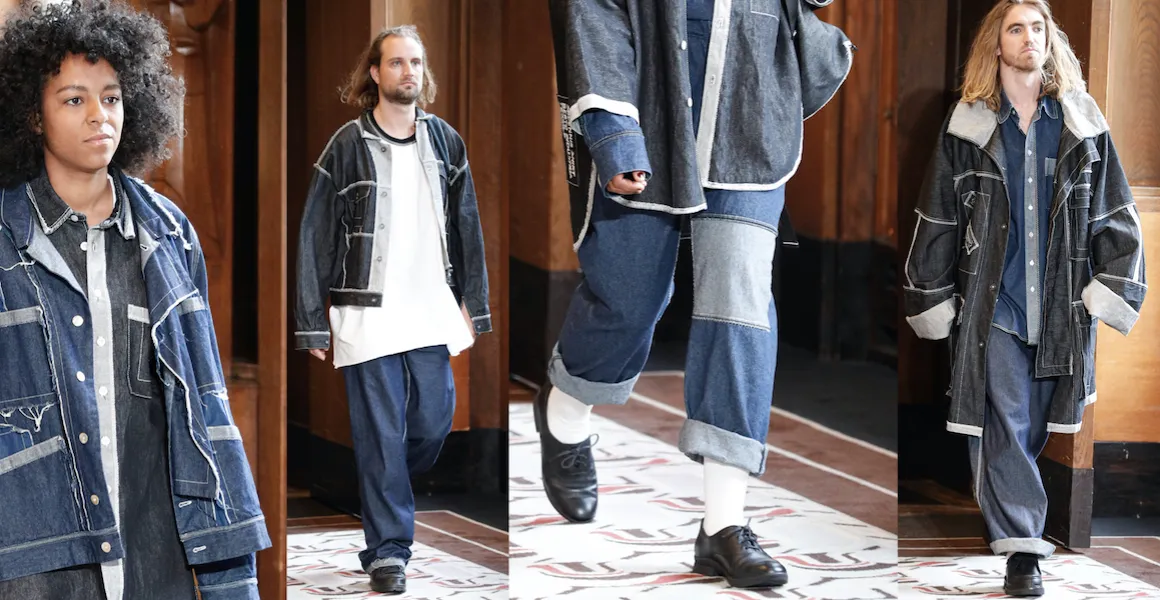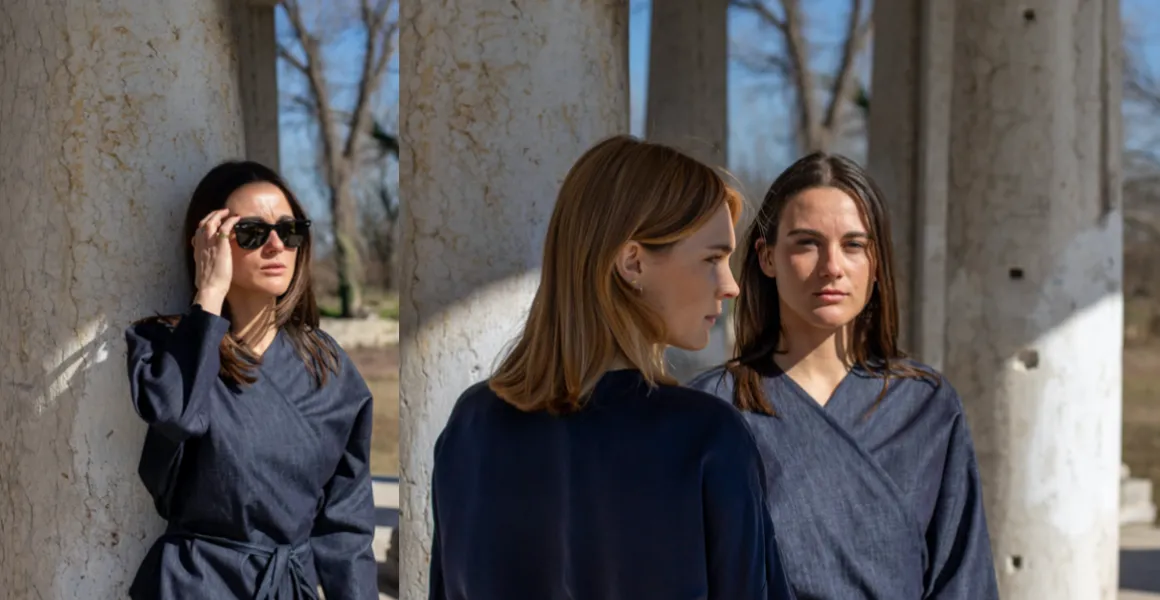What was your first project?
My first project is a reversible dress-apron. I oversaw the entire process, from concept through artisanal tailoring. I like to include it among my projects because it was truly one of my first ideas to take shape. It carries an emotional bond and a pleasant memory of when I attended Aunt Giuliana’s atelier to learn the craft. This approach—both intellectual and hands-on—is still an integral part of my modus operandi: I work closely with my pattern maker, personally sewing all the first mockups. This allows me to study and improve the fit to make the garment as comfortable as possible and aligned with my vision.
The creative process: do you work instinctively or plan every single step? Where do your ideas come from?
Given the extremely tight timelines in this sector, it would be advisable to plan every single step, both in the short and medium-long term. On my end, I’m trying to align and manage time increasingly well, which is essentially the most precious asset there is. I would love to say I can distinguish every single phase but, being alone, I often find myself handling multiple situations at the same time. Ideas arise from personal reworking and from a series of connections among all those external stimuli that I pick up mentally or gather physically. I often jot down ideas or insights on paper, which I later revisit to rework.
What did you think when Berto contacted you?
In fact, I was the one who contacted Berto. I had the pleasure of meeting Arianna, the project manager, during a “social table dinner” organized by Momi Restaurant in Nove (province of Vicenza). The social table dinner was created to bring together people who may not know each other around the same table to discuss various topics over dinner, tied together by a common thread. On that occasion, a friend presented her capsule collection in collaboration with Berto, and that’s how I learned about “Berto4YoungTalent.” I think this project is a brilliant intuition, as it gives emerging brands the opportunity not to get stuck because of the well-known “minimum production runs,” and to get started without the handbrake on. If only more companies were like this!
Which Berto fabrics have you worked with for your project and collections?
I included denim in a collection for the first time. For the upcoming summer season I used GLOBE SKY 8 for a blazer, two different types of trousers, a long skirt, and a waistcoat. Bonsai, instead, for an asymmetric shirt that I presented both with long sleeves and sleeveless.
What do you consider the most significant aspect of Berto for Talents? What goals have you been able to achieve through this program?
As I said earlier, it is a real and concrete opportunity. You have the possibility to work with quality fabrics without being blocked by the obstacle of minimum production runs, which is a real hurdle for emerging brands.
“Less but better” can be interpreted as an endorsement of a certain degree of purity in design and fashion design. It can also be understood as an environmental message about reduction and sustainability. What are your thoughts on this?
I identify strongly with the words “less but better,” both in terms of InDetail’s aesthetics and design approach and in my private life. I was fortunate to grow up in a family sensitive to environmental issues and the importance of nature itself, so from a young age I was taught “respect.” I believe that reducing environmental impact must become the priority for every entity. We are at a point where we must act and can no longer postpone. For my part, I try to offer quality garments that are durable over time; I strive to stay informed—for example, I recently attended Out Of Fashion, a conscious fashion course promoted by the Milan-based association Connecting Cultures, where I had the opportunity to engage with industry experts such as Mr. Mauro Rossetti of the Textile and Health Association, engineer Claudio Tonin of ISMAC (Institute of Macromolecules, U.O.S. Biella), the MEIDEA studio regarding the world of denim, and many others. In essence, I try to collaborate with companies aligned with my thinking. And I still have a long way to go!
Is there something you’ve never done that you’d like to accomplish?
I have a very long list!
